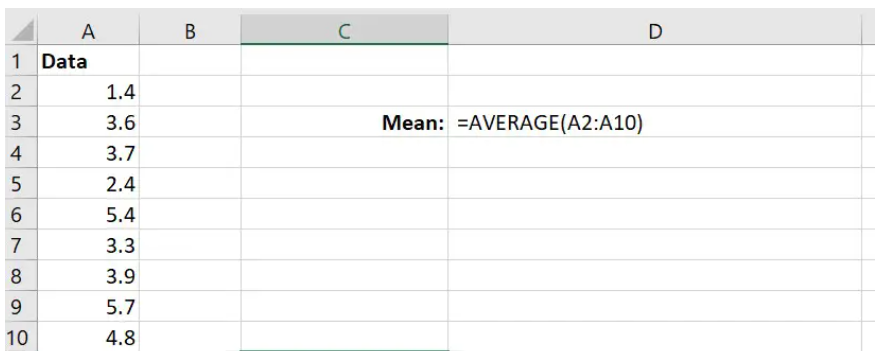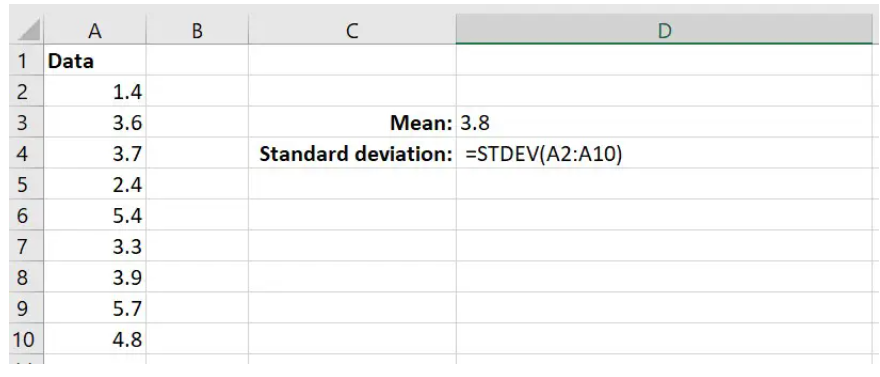In the world of numbers and data, one term that holds immense significance is Standard Error (SE). It’s not just statistical jargon; it’s a practical tool that can make or break the conclusions you draw from your data.
Picture this: you’re conducting a survey, analyzing experiments, or interpreting financial data. You’ve got a sample, not the entire population, and you want to know how reliable your results are. This is where Standard Error steps in. It helps you gauge the reliability of your sample mean compared to the actual population mean.
In simpler terms, it tells you how confident you can be in your findings. So to become a pro in standard error, in this comprehensive guide, we will delve deep into the intricacies of calculating standard error using Microsoft Excel, equipping you with the knowledge to excel in data analysis.
Introduction to Standard Error
Standard Error (SE) is a statistical term that quantifies the variability or dispersion of a dataset. It provides valuable insights into the reliability of your sample mean as an estimate of the population mean. A low SE indicates that your sample mean is closely aligned with the population mean, while a high SE suggests greater variability, making the sample mean less reliable.
Why Standard Error Matters
Understanding why standard error is crucial is the first step to mastering its calculation. When conducting research or analyzing data, it’s often impossible to gather data from an entire population. Instead, we work with samples. The standard error allows us to gauge how much our sample mean is likely to deviate from the true population mean.
Imagine you are surveying a group of people to determine their average income. It’s impractical to survey every individual in the country, so you take a sample. The standard error helps you quantify the likely variation between your sample’s mean income and the actual mean income of the entire population.
Calculating Standard Error in Excel
Now, let’s dive into the practical aspects of calculating standard error using Microsoft Excel. Follow these steps meticulously to ensure precise results:
Step 1: Prepare Your Data
Before you can calculate the standard error, you need a dataset in Excel. Ensure your data is organized in a single column or row, as Excel requires data to be in a contiguous range for statistical calculations.
Step 2: Calculate the Sample Mean
In Excel, use the formula =AVERAGE(range) to calculate the sample mean. Replace “range” with the actual range of your data.

Step 3: Compute the Standard Deviation
The standard deviation measures the spread of your data. In Excel, use the formula =STDEV(range) to calculate the sample standard deviation. Again, replace “range” with your data range.

Step 4: Calculate the Sample Size
Determine the number of data points in your sample. This is crucial for the standard error calculation.
Step 5: Calculate Standard Error
With the sample mean, standard deviation, and sample size in hand, you can calculate the standard error using the formula:
=STDEV(range)/SQRT(sample size)

Ensure you replace “range” and “sample size” with your actual data and sample size values.
Interpreting the Results
Once you’ve performed the calculations, you will have your standard error value. This number represents the standard error associated with your sample mean. The smaller the standard error, the more reliable your sample mean is as an estimate of the population mean.
Conclusion
So, as we wrap up this exploration into the world of Standard Error in Excel, remember that it’s not about complex formulas or mind-boggling statistics. It’s about giving you the power to make more informed decisions based on your data.
Armed with the knowledge of how to calculate Standard Error, you’re better equipped to navigate the sometimes murky waters of data analysis. Whether you’re a student trying to ace your statistics class, a scientist conducting groundbreaking research, or a business analyst guiding your company’s future, this skill is your ally.
In the end, it’s all about making your data work for you, ensuring that your conclusions are solid, and your decisions are well-founded. So go ahead, crunch those numbers, and let Standard Error be your trusty companion on your journey to better, more confident data analysis.
